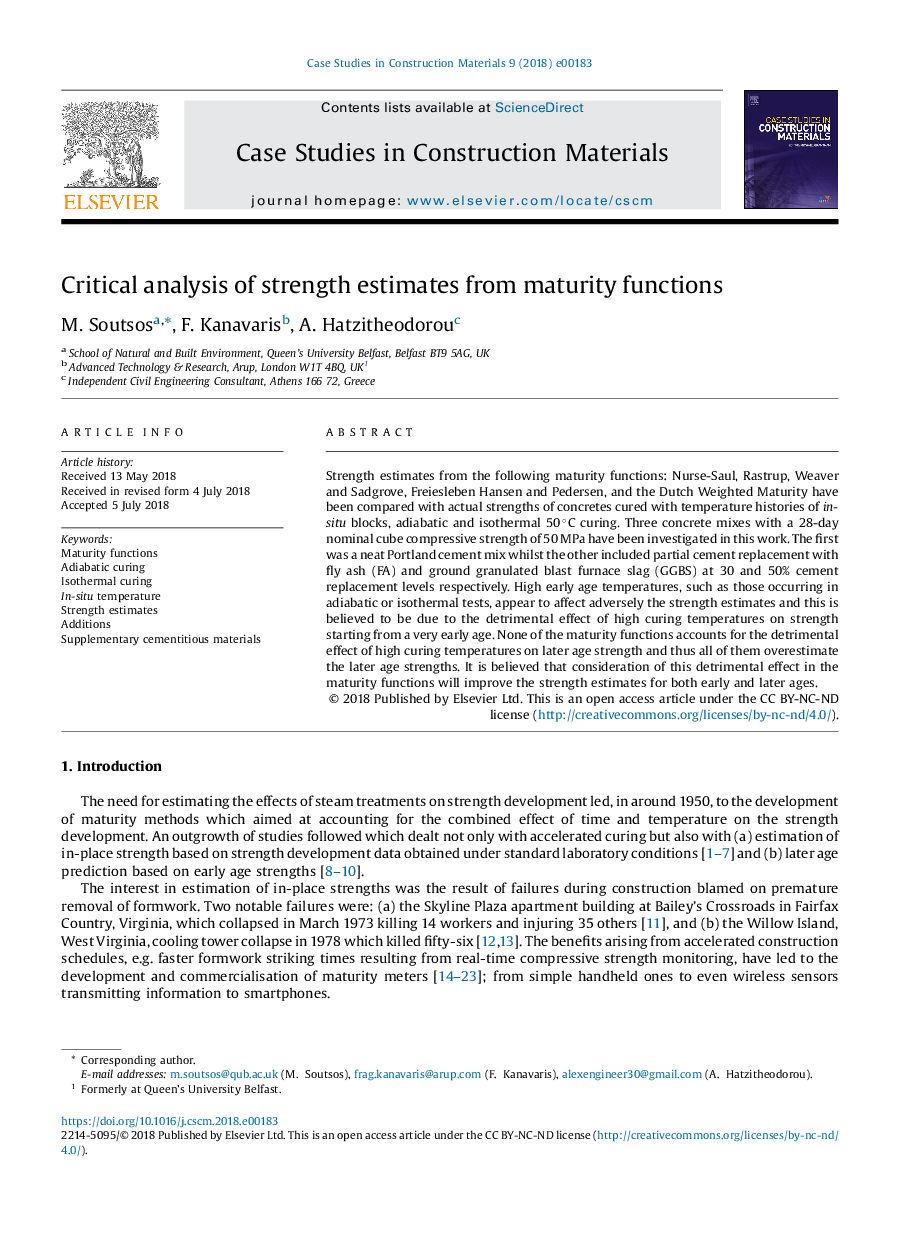| Article ID | Journal | Published Year | Pages | File Type |
|---|---|---|---|---|
| 6701713 | Case Studies in Construction Materials | 2018 | 19 Pages |
Abstract
Strength estimates from the following maturity functions: Nurse-Saul, Rastrup, Weaver and Sadgrove, Freiesleben Hansen and Pedersen, and the Dutch Weighted Maturity have been compared with actual strengths of concretes cured with temperature histories of in-situ blocks, adiabatic and isothermal 50â¯Â°C curing. Three concrete mixes with a 28-day nominal cube compressive strength of 50â¯MPa have been investigated in this work. The first was a neat Portland cement mix whilst the other included partial cement replacement with fly ash (FA) and ground granulated blast furnace slag (GGBS) at 30 and 50% cement replacement levels respectively. High early age temperatures, such as those occurring in adiabatic or isothermal tests, appear to affect adversely the strength estimates and this is believed to be due to the detrimental effect of high curing temperatures on strength starting from a very early age. None of the maturity functions accounts for the detrimental effect of high curing temperatures on later age strength and thus all of them overestimate the later age strengths. It is believed that consideration of this detrimental effect in the maturity functions will improve the strength estimates for both early and later ages.
Related Topics
Physical Sciences and Engineering
Engineering
Civil and Structural Engineering
Authors
M. Soutsos, F. Kanavaris, A. Hatzitheodorou,
